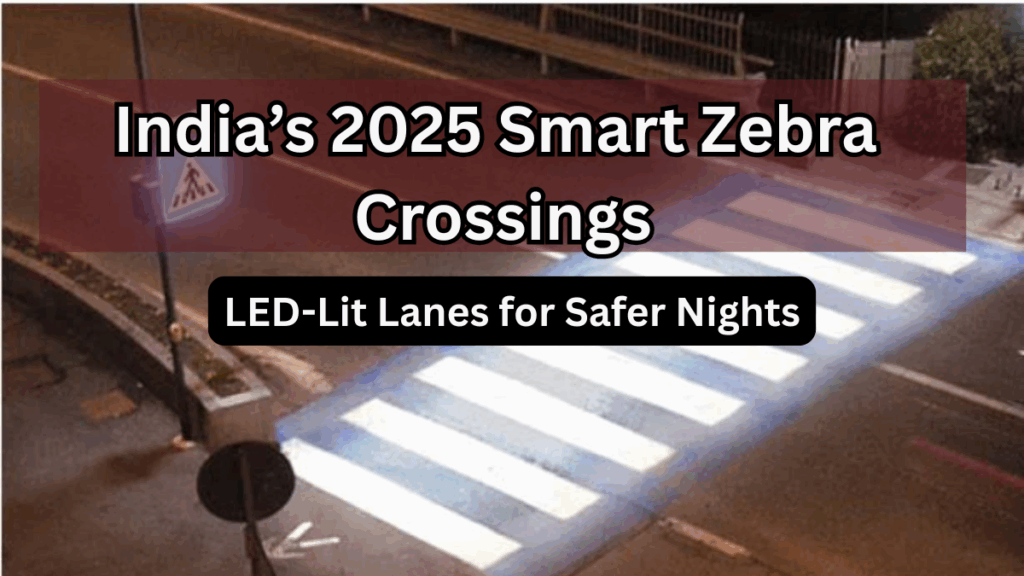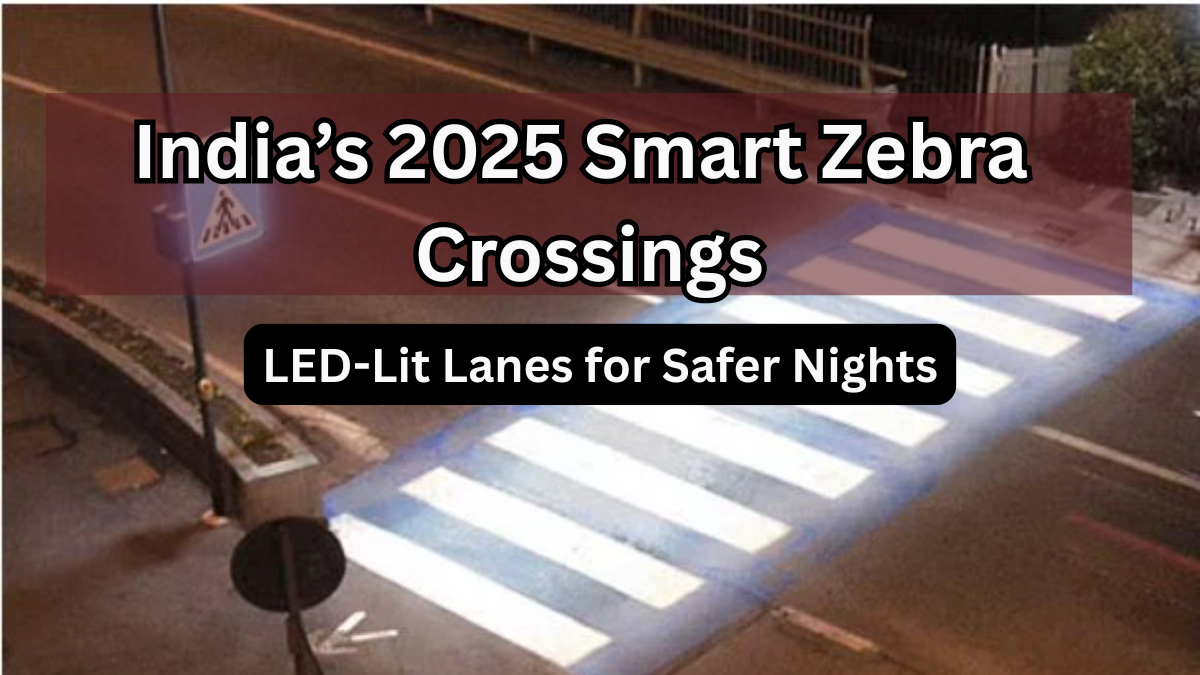India is stepping into a new era of road safety with the launch of smart zebra crossing India 2025 initiatives. The aim is to reduce nighttime accidents and enhance pedestrian safety using cutting-edge LED technology. These crossings are not just painted lines—they’re smart, illuminated lanes that make pedestrians more visible to drivers at all times.

What Are Smart Zebra Crossings?
Smart zebra crossings are LED-embedded pedestrian lanes that light up at night or in low-visibility conditions. Unlike conventional crossings, these feature:
-
Bright LED strips along the crosswalk
-
Sensors that detect pedestrian movement
-
Real-time illumination to warn oncoming traffic
-
Integration with traffic signals for smoother flow
This initiative is part of India’s broader push to modernize urban infrastructure while prioritizing LED road safety.
Key Benefits of Smart Zebra Crossings
Implementing smart zebra crossing India 2025 brings several advantages:
-
Enhanced Night Safety: LED lights make pedestrians visible even in poorly lit streets
-
Reduced Accidents: Sensors trigger alerts for vehicles when someone steps onto the crossing
-
Eco-Friendly: Energy-efficient LEDs reduce electricity consumption
-
Smart City Integration: Works in tandem with urban traffic management systems
State-Wise Rollout of Smart Zebra Crossings
The government plans to roll out these LED crossings across major cities initially, focusing on accident-prone zones. Here’s a vertical table showing the priority states:
| State | Target Cities | Estimated Crossings (2025) |
|---|---|---|
| Maharashtra | Mumbai, Pune | 250 |
| Delhi | New Delhi, Gurugram | 180 |
| Karnataka | Bengaluru | 150 |
| Tamil Nadu | Chennai, Coimbatore | 130 |
| West Bengal | Kolkata | 120 |
| Other States | Major urban centers | 300 |
This phased approach ensures that LED road safety reaches both metro cities and high-density towns.
How Smart Zebra Crossings Work
-
Sensor Activation: Pedestrian sensors detect movement
-
LED Illumination: Lights along the crossing turn on immediately
-
Driver Alerts: Oncoming traffic is warned via embedded LEDs or connected signals
-
Data Collection: Smart sensors can also track pedestrian flow and provide data for city planning
Challenges and Future Plans
While smart zebra crossing India 2025 is a significant step forward, it faces some challenges:
-
Initial installation costs can be high
-
Maintenance of LED strips in heavy traffic zones
-
Training local authorities for technology monitoring
Despite these, plans are underway to expand coverage, including rural areas with high pedestrian movement, ensuring safer roads nationwide.
FAQs About Smart Zebra Crossings in India
Q1. What is the main purpose of smart zebra crossings in India?
A1. The primary goal is to improve pedestrian safety by using LED road safety technology that makes crosswalks more visible, especially at night.
Q2. Which cities will get smart zebra crossings first?
A2. Major metropolitan areas like Mumbai, Delhi, Bengaluru, Chennai, and Kolkata are the first priority, with plans to expand to other urban centers.
Q3. How do smart zebra crossings save energy?
A3. They use energy-efficient LEDs that illuminate only when pedestrians are detected, reducing unnecessary electricity usage.
Q4. Can these crossings help reduce accidents?
A4. Yes. The combination of LED illumination and motion sensors alerts drivers in real time, significantly lowering the risk of pedestrian accidents.
Conclusion
India’s initiative with smart zebra crossing India 2025 represents a fusion of technology and safety, making urban streets safer for everyone. With the integration of LED road safety features, pedestrians can now cross streets confidently even during the darkest hours.
Click here to learn more
